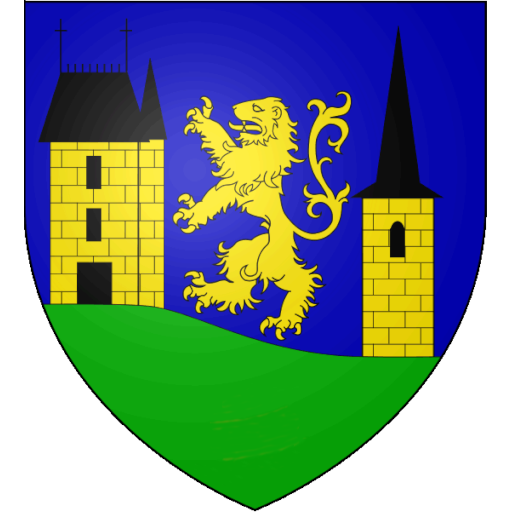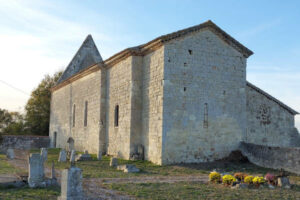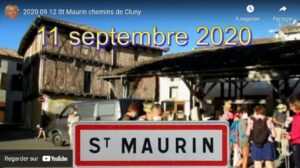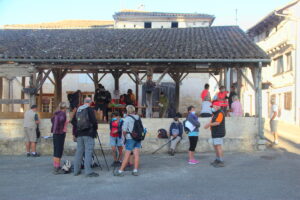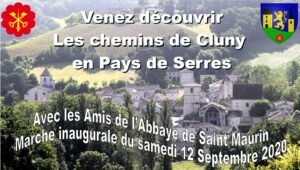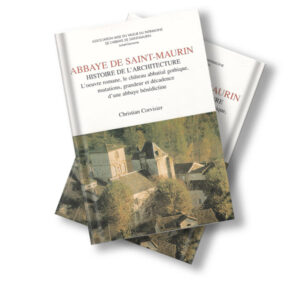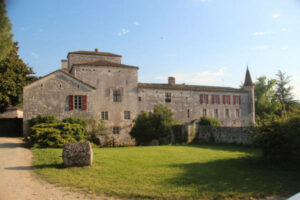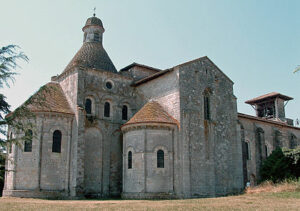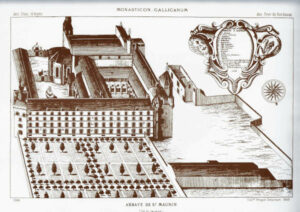Our news
Stay informed about what is happening in the organisation!
Church of Saint Sixte
The parish was a dependency of the Cauzac priory. In 1253 the rights of the Saint Maurin abbey over Saint Sixte and its annexe, Gandaille, were recognised by Guillaume, bishop of Agen.
Church of Saint Louis de Gandaille
This Romanesque church built of fine stones, laid in regular courses, has been recently restored. Only the nave is original.
In 1243 the abbot of Saint Maurin, Guillaume de Belpech, bought the tithe collection rights.
Central loop inauguration walk: impressions of a participant
Discover the video taken by a participant in the inauguration walk of the paths of Cluny en Pays de Serres on 12 September 2020.
September 12 inaugural march: success!
The inaugural hike of the central loop of the paths of Cluny in the Pays de Serres, on September 12, 2020, was a great success.
Inauguration walk Chemins de Cluny en Pays de Serres
Walk on September 12, 2020 - First on the paths of Cluny du Pays de Serres - Come in great numbers!
Cluniac sites in Europe
Two centuries after the French Revolution, a network of Cluniac sites was reborn in 1994 under the impetus of the European Federation of Cluniac Sites. From Scotland to Italy, via England, Switzerland and France, this guide invites you to discover some 160 Cluniac sites.
Abbey of Saint-Maurin – Architectural history
The abbey of Saint-Maurin is an exception. Although its church has been handed over to the demolition workers, the abbey, which was not suddenly rebuilt, is still essentially present on the whole of its primitive enclosure, in the heart of the village.
Discover the study carried out by Christian Corvisier which gives us the keys to reading the remains of the abbey.
Abbey of Saint-Maurin – Legend and processional songs
To celebrate the ninth centenary of the abbey church, the Association for the Development of the Heritage of the Abbey of Saint-Maurin has decided to bring to the attention of those interested in religious life during the early Middle Ages and in the monumental and historical heritage of this small village in Aquitaine, the passion of Saint Maurin followed by a critical analysis of his legend and a study of the processional songs specific to this abbey, so that the memory lives on...
Mill and church ND de Ferrussac
The origins of the fortified mill of Ferrussac go back to the first centuries of our era. Indeed, the church located on the estate (Notre Dame de Ferrussac) most probably rests on the foundations of a Gallo-Roman villa, as attested by the ac ending of the name.
This fortified mill was bought by the abbot of Saint Maurin in 1424; Jean I de Boville usurped its rights and, after arbitration in 1452, kept the estate. It remained in the de Boville family and was offered in 1606 to Bertrand I d'Audevars.
Moirax
A village that has existed since antiquity according to some archaeological evidence, Moirax was a stopover for pilgrims on their way to Santiago de Compostela during the Middle Ages. In the 11th century, in 1049, one of the first Cluniac abbeys was founded here.
It became the Cluniac priory of Sainte-Marie and its church is now dedicated to Notre-Dame de Moirax.
Bi-annual newsletter nr20 January 2020 Edition
Summary of the newsletter:
President's message
Summer events
Cluniac news
Feedback from walkers
Restoration work
Cluniac footpaths : new loops
The Maurist abbey
Visit the remains of the Abbey, free !
Discover the Abbey with the help of explicatory panels set up by the Amis de l'Abbaye de Saint-Maurin
